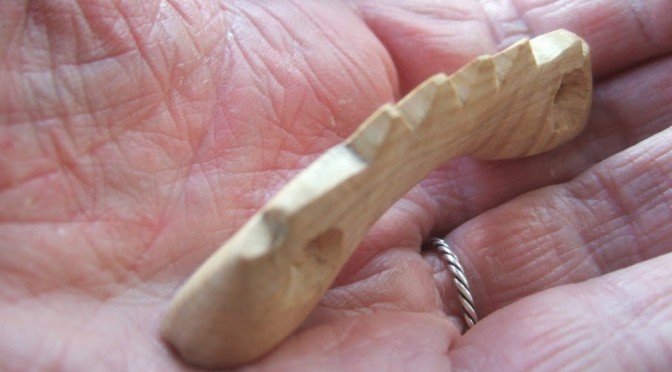AOC Archaeology have released a laser scan rendering of the lyre bridge from Uamh an Ard Achadh (High Pasture Cave) on Skye. I had already been very interested in this fragment of a musical instrument from the iron age (the original interim report suggests a date of 450 to 550 BC).
Using the rendering, and scaling from the photo in the interim report, I have made a copy or reconstruction of the bridge. As you can see from the photos, the excavated bridge is burnt and broken, with perhaps 1/4 missing from one end. It seems clear to me that the four triangular spikes along the top edge are complete – the gap between the second and third is centered over the carved arch on the underside of the bridge. I confirmed this by cutting out profile views and trying different alignments. This suggests to me that the bridge was for an instrument with three or five strings.
For my bridge I used a piece of sycamore or maple which I had to hand. I made it entirely with hand tools (knives), and finished it by scraping and then sealed the surface with beeswax. Because it is hand carved from a slightly curious piece of wood with some tight flame in the grain, and also because I was only working from the laser scan screenshots not from proper dimensioned plans, it is not an exact replica, but I tried to get it fairly close.
As you can see it works just perfectly. The lyre has six strings, so I just ran the last two together and this does not seem to be a problem. The strings are further apart at the bridge than on other lyres I have seen. The backwards slant of the bridge is curious – unless I am misunderstanding the laser scan, I wonder if it is designed for a much sharper break angle than I am using?
I’ll be playing this lyre at my cathedral concert in the ruins of St Andrews cathedral on Tuesday 5th June at 12.45pm. The music will however be medieval, not iron age!


